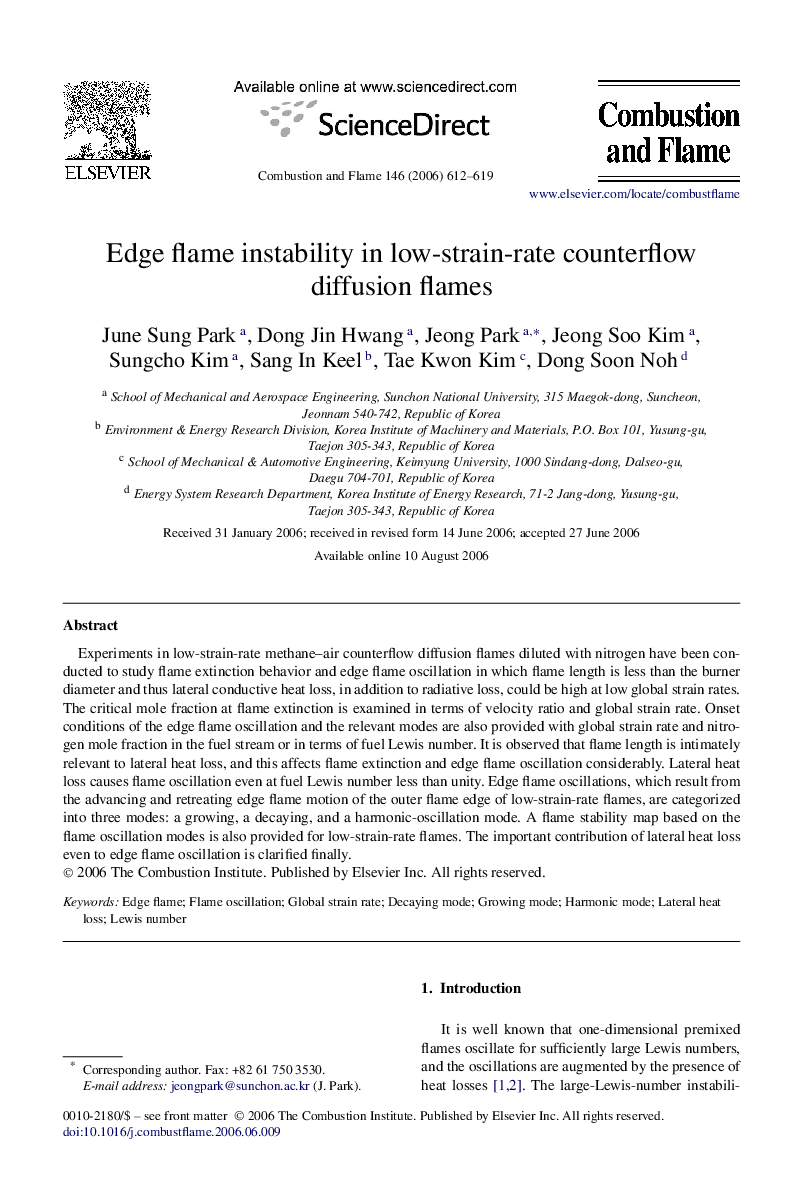| Article ID | Journal | Published Year | Pages | File Type |
|---|---|---|---|---|
| 170118 | Combustion and Flame | 2006 | 8 Pages |
Experiments in low-strain-rate methane–air counterflow diffusion flames diluted with nitrogen have been conducted to study flame extinction behavior and edge flame oscillation in which flame length is less than the burner diameter and thus lateral conductive heat loss, in addition to radiative loss, could be high at low global strain rates. The critical mole fraction at flame extinction is examined in terms of velocity ratio and global strain rate. Onset conditions of the edge flame oscillation and the relevant modes are also provided with global strain rate and nitrogen mole fraction in the fuel stream or in terms of fuel Lewis number. It is observed that flame length is intimately relevant to lateral heat loss, and this affects flame extinction and edge flame oscillation considerably. Lateral heat loss causes flame oscillation even at fuel Lewis number less than unity. Edge flame oscillations, which result from the advancing and retreating edge flame motion of the outer flame edge of low-strain-rate flames, are categorized into three modes: a growing, a decaying, and a harmonic-oscillation mode. A flame stability map based on the flame oscillation modes is also provided for low-strain-rate flames. The important contribution of lateral heat loss even to edge flame oscillation is clarified finally.
